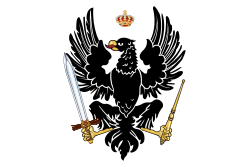US National Length Meter
Autor/Urheber:
Autor/-in unbekanntUnknown author
Größe:
350 x 300 Pixel (11272 Bytes)
Beschreibung:
Closeup of
National Prototype Meter Bar No. 27, made in 1889 by the
International Bureau of Weights and Measures (BIPM) and given to the United States, which served as the standard for defining all units of length in the US from 1893 to 1960. In 1960 the SI changed the standard of length to define the meter by the wavelength of light of a spectral line of krypton 86. This bar is now in the collection of the NIST Museum, Gaithersburg, Maryland, USA.
After the Treaty of the Meter had been signed in 1875, the BIPM in Sevres, France made 30 prototype standard bars of 90% platinum–10% iridium alloy. One of the bars was selected as the International Meter. Small elliptical areas on the upper surface of the central rib at each end of the bars were highly polished, and three lines, nominally 0.5 mm apart, were ruled on these surfaces, the distance between the middle lines of each group at the temperature of freezing water defining the meter. The bars had a modified X cross section named for the French scientist,
Henri Tresca, who proposed it. The Tresca section was designed to provide maximum stiffness-to-weight ratio, reduce thermal accommodation time, and to enable the graduation lines to be located on the "neutral" axis of the bar, where change in length with flexure is minimum. After selecting the bar to be used as the International Prototype Meter, the other bars were calibrated relative to it and given to nations to serve as their national standards. The United States received National Prototype Meters No. 27 and No. 21 in 1890. The US adoption of the metric system in 1893 made the meter the fundamental length standard of the US, and No. 27 became the primary national standard for all length measurements. The relationship between No. 27 and the International Prototype Meter was certified to be 1 m − 1.6 µm + 8.657 µm·T + 0.001 µm·T
2 ± 0.2 µm with T in degrees centigrade. Intercomparison between the International Meter and No. 27 yielded a probable error of ±0.04 µm. The probable uncertainty of the length of No. 27 at temperatures between 20°C and 25°C was estimated by BIPM to lie between ±0.1 µm and ±0.2 µm.
Kommentar zur Lizenz:
Product of employee of US Government, NIST.
Disclaimer on NIST website: "With the exception of material marked as copyrighted, information presented on these pages is considered public information and may be distributed or copied."
Weitere Informationen zur Lizenz des Bildes finden Sie hier. Letzte Aktualisierung: Tue, 09 Apr 2024 15:32:15 GMT
Relevante Bilder
Relevante Artikel
Urmeter
Das Urmeter ist die bis 1960 gültige Maßverkörperung der Längeneinheit Meter. Bei der Einführung des Metrischen Einheitensystems wurde der Meter zunächst als zehn-millionster Teil des Viertels desjenigen Erdumfangs festgelegt, der Paris und den Nordpol berührt. Der Erdumfang wurde geodätisch vermessen und das Ergebnis auf den Abstand zweier Markierungen auf einem Metallstab übertragen. Dieser Metallstab wurde in der Folge zur Eichung von Messgeräten und Maßstäben für den täglichen Gebrauch und die Landesvermessung verwendet.
.. weiterlesen
Meter
Der Meter ist die Basiseinheit der Länge im Internationalen Einheitensystem (SI) und in anderen metrischen Einheitensystemen. Ein Meter ist seit 1983 definiert als die Länge der Strecke, die das Licht im Vakuum während der Dauer von 1/299 792 458 Sekunde zurücklegt. Das Einheitenzeichen des Meters ist der Kleinbuchstabe „m“. Für dezimale Vielfache und Teile des Meters werden die internationalen Vorsätze für Maßeinheiten verwendet.
.. weiterlesen

























